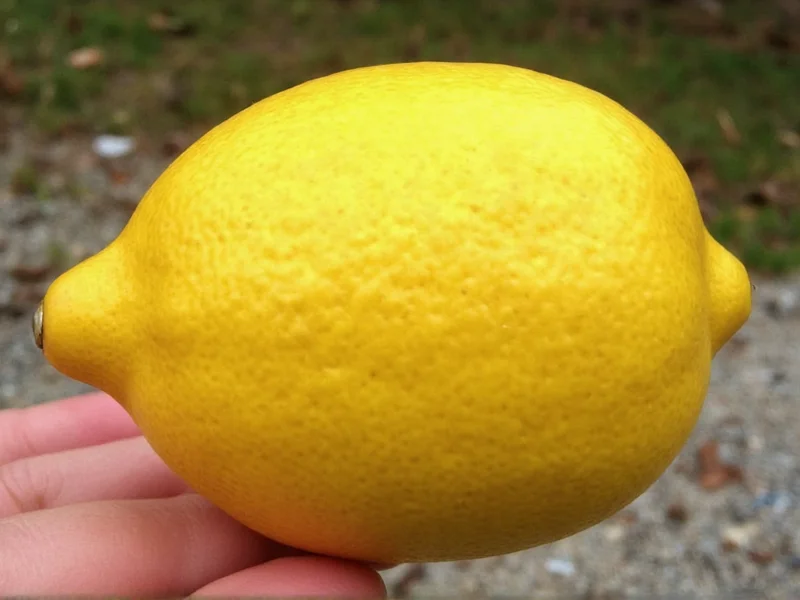Understanding what lemon zest means is essential for anyone exploring culinary arts or following recipes that call for this ingredient. While the term might confuse beginners, it's a fundamental component in many dishes that adds depth and complexity to flavors.
What Exactly Is Lemon Zest?
Lemon zest is specifically the outermost colored portion of the lemon peel, typically just 1/16 inch thick. This layer contains essential oils that give lemons their characteristic fragrance and flavor. The white pith underneath is bitter and should be avoided when zesting.
Many people confuse lemon zest vs lemon peel - the key difference is that zest refers only to the thin colored layer, while peel includes both the colored layer and the bitter white pith. Using the entire peel instead of just the zest can result in unpleasantly bitter dishes.
Why Chefs Value Lemon Zest
The concentrated citrus oils in lemon zest deliver intense flavor without adding liquid like juice would. This makes zest particularly valuable in:
- Baking recipes where extra moisture would affect texture
- Desserts that need bright citrus notes without tartness
- Savory dishes requiring subtle citrus enhancement
- Cocktails and beverages for aromatic complexity
Professional chefs often prefer fresh zest over bottled lemon oil because it provides a more vibrant, natural flavor profile. When recipes specify "finely grated lemon zest," they're asking for the smallest possible pieces to distribute flavor evenly throughout the dish.
How to Properly Zest a Lemon
Creating perfect lemon zest requires the right tools and technique:
| Tool | Best For | Tips |
|---|---|---|
| Microplane grater | Fine, fluffy zest | Use light pressure and rotate lemon frequently |
| Box grater | Medium recipes | Use the finest side and watch for pith |
| Zester tool | Thin strips for garnish | Press firmly and pull toward you |
| Vegetable peeler | Large strips for infusions | Remove pith with knife afterward |
Always wash lemons thoroughly before zesting, especially if they're not organic. The process should take just 30-60 seconds per lemon. For best results, zest at room temperature when the oils are most accessible.
Common Culinary Applications
Lemon zest enhances countless recipes across various cuisines. Understanding how to use lemon zest in baking can transform ordinary desserts into extraordinary creations. Some popular applications include:
- Baking: Added to cake batters, cookie dough, and frosting for citrus flavor without altering consistency
- Sauces: Incorporated into hollandaise, vinaigrettes, and creamy pasta sauces
- Seafood: Mixed with herbs for fish rubs or finishing grilled shellfish
- Cocktails: Used as garnish or muddled for aromatic complexity
- Preserves: Added to marmalades and fruit compotes for brightness
When following recipes that specify "one lemon's worth of zest," you can expect to yield approximately 1-2 tablespoons of zest per medium lemon, depending on size and zesting method.
Storage and Preservation Techniques
Fresh lemon zest has a limited shelf life but can be preserved effectively:
- Short-term: Store in an airtight container in the refrigerator for up to 3 days
- Medium-term: Mix with a small amount of lemon juice and freeze for 2-3 weeks
- Long-term: Freeze zest in ice cube trays covered with oil or water for up to 6 months
For those wondering can you buy lemon zest already prepared, dried lemon zest is available but lacks the vibrant flavor of fresh zest. Most professional chefs recommend zesting fresh lemons whenever possible for superior results.
Substituting Lemon Zest When Unavailable
If you don't have fresh lemons available, several alternatives can work in a pinch:
- Lemon extract (use 1/2 teaspoon extract per tablespoon of zest)
- Dried lemon peel (reconstitute with warm water first)
- Lemon oil (1-2 drops per tablespoon of zest)
- Lime or orange zest (for similar citrus notes with different flavor profiles)
Keep in mind that these substitutes won't provide identical results to fresh lemon zest. The flavor will be less vibrant and may alter the final dish's character. For best baking results, fresh zest remains the superior choice.
Maximizing Flavor Impact
To get the most from your lemon zest, consider these professional techniques:
- Add zest early in cooking to infuse flavors throughout the dish
- Combine with sugar and let sit for 30 minutes to create "lemon sugar" for baking
- Use immediately after zesting for maximum aromatic impact
- Pair with complementary flavors like vanilla, mint, or basil
Understanding the difference between lemon zest and juice helps chefs make informed decisions about when to use each. While juice provides acidity and liquid, zest delivers concentrated flavor without altering texture—making it invaluable in certain recipes.











 浙公网安备
33010002000092号
浙公网安备
33010002000092号 浙B2-20120091-4
浙B2-20120091-4